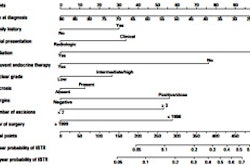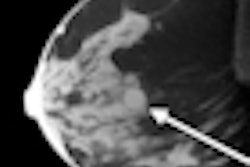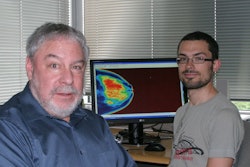The limits of conventional mammography technology, rather than the biology of breast cancer, contribute more to the modality's lower performance in women between the ages of 40 and 49, according to a new study published in the August issue of the Journal of the National Cancer Institute.
And the technology's limits suggest that other modalities, such as digital mammography and ultrasound, are more effective for screening younger women, despite their increased cost, researchers at Stanford University's School of Medicine in Stanford, CA, found (J Natl Cancer Inst, August 2010, Vol. 102:16, pp. 1-9).
Lead author Stephanie Bailey, PhD, and colleagues used a computer-based simulation analysis of screening mammography to compare the effects of mammographic tumor detectability, or the median tumor size detectable on a mammogram, and tumor volume doubling time on the poorer screening outcomes in younger women compared with older women (ages 50 to 69 years).
The group used a model it developed called the Breast Cancer Screening Simulator. Bailey's team calculated estimates by calibrating the predicted breast cancer incidence rates to actual rates from the Surveillance, Epidemiology, and End Results (SEER) database, and predicted screen-detected tumor sizes to the actual data from the Breast Cancer Surveillance Consortium (BCSC).
Bailey's team set up four hypothetical scenarios to analyze:
- Women ages 40 to 49 assigned their own mammography threshold (tumor detectability) and tumor volume doubling time
- Women in this age group assigned their own mammography threshold but the mean doubling time of women ages 50 to 69 (30 to 335 days)
- Women in this age group assigned the median mammography threshold for women ages 50 to 69 (0.8 cm to 2 cm), but their own doubling time
- Women in this age group assigned to the median mammography threshold and the mean doubling time of women ages 50 to 69
The team's model-based analysis of screening showed that the mammographic threshold and doubling time varied with the age of the women: Lower mammographic tumor detectability accounted for 79% of the poorer sensitivity in mammography screening in younger women compared with older women, while tumor doubling time accounted for 21%, Bailey and colleagues wrote.
Technologies such as digital mammography and ultrasound can help this population, according to the researchers. And effectiveness may trump increased cost in this case.
"When evaluating a new screening technology to an existing one, the benefits are often compared with the harms and cost," they wrote. "A recent cost-effectiveness analysis of the Digital Mammographic Imaging Screening Trial found that digital mammography screening, compared with film-based screening, results in sufficient health gains in younger women to warrant its increased cost."
By Kate Madden Yee
AuntMinnie.com staff writer
August 2, 2010
Related Reading
HHS rules support earlier mammography, July 14, 2010
HHS proposes HIPAA changes, July 9, 2010
10,000-plus in U.S. die for lack of cancer screens: CDC, July 6, 2010
Follow-ups boost mammo use among insured low-income women, June 30, 2010
Mammography screening hard-hit by economic downturn, June 22, 2010
Copyright © 2010 AuntMinnie.com



















